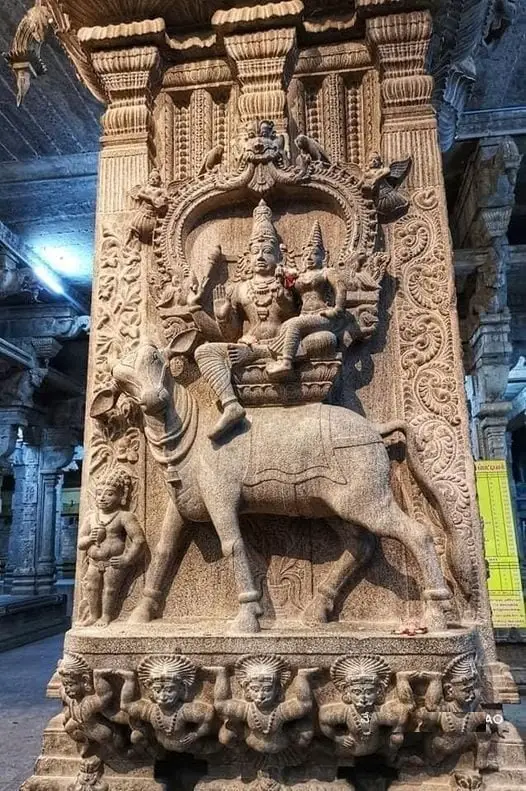In the ancient city of Trichy, veiled by the mist of centuries, stands a testament to a civilization that sculpted the very stone into stories, the Jambukeswarar Temple. As the world was grasping the rudiments of two-dimensional representations, the artisans of the Chola Dynasty were already transcending the flat surfaces, coaxing out three-dimensional tales from the unyielding stone. This temple, which whispers tales from over 1800 years ago, is not merely a religious sanctuary but a puzzle of history and artistry waiting to be unraveled.
The walls of Jambukeswarar are alive, not with the sound but with the echoes of the chisel. Each sculpture tells a story that’s more than religious iconography; they are a lexicon of the people, their beliefs, their everyday life, and their unparalleled artistry. Carved with such deftness that they seem to pulse with life, the sculptures create an interplay of shadows and light, a dance of the physical with the mystical. Every corner, every turn presents a new mystery, as if the stone itself is an ancient tome in the language of the gods, narrated through the language of the chisel.

The Chola Dynasty, known for its mighty empire and profound contributions to art, architecture, and culture, has left behind a riddle of magnificence. How did they achieve such mastery over the stone? With what divine inspiration did they curve, cut, and create? The intricate detail in each figure, each floral motif, and each celestial being depicted in the Jambukeswarar sculptures suggest a sophistication that rivals even the imagination of our modern age.
Imagine the temple grounds in the hours of twilight, the stones casting long, spectral shadows. The atmosphere is thick with the scent of incense and the silent chants of the priests. Here, the boundary between the earthly realm and the divine seems to blur. It’s said that to walk among these sculptures is to walk alongside history itself, to trace the outlines of a story that’s as eternal as the stones they’re carved from.

Each sculpture in Jambukeswarar is a mystery unto itself. Why were these particular deities chosen to adorn the temple walls? What do the depicted myths tell us about the worldview of the ancient Cholas? Do the carvings conceal secrets of ancient technologies or philosophical insights that have been lost to time?
Skeptics and believers alike are drawn to Jambukeswarar, the former to peel back the layers of history and marvel at the precision of ancient craftsmanship, the latter to feel the divine presence and perhaps to seek answers to spiritual enigmas. Both leave with more questions than answers, pondering the enigmatic skill that could render stone into breath and life, creating a 3D masterpiece that stands as a silent guardian of past wonders.

The Jambukeswarar Temple, with its 3D sculptures, remains an unsolved mystery of human ingenuity, a bridge to our ancestors who reached such artistic heights that their work still stands robust against the tide of time, inspiring awe and reverence. This is a place where history doesn’t merely speak—it resonates through the ages.

